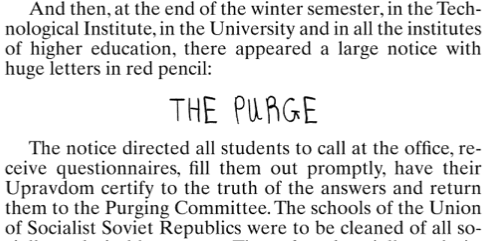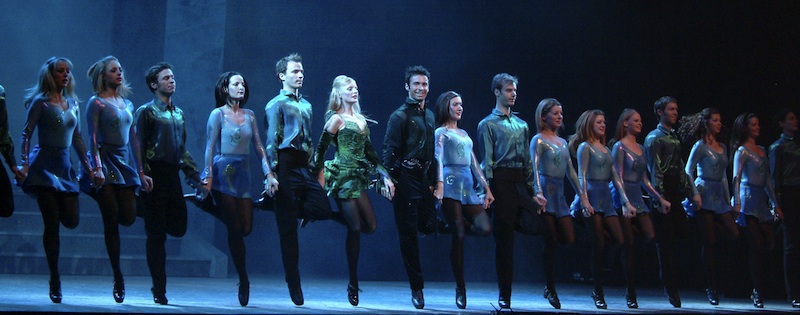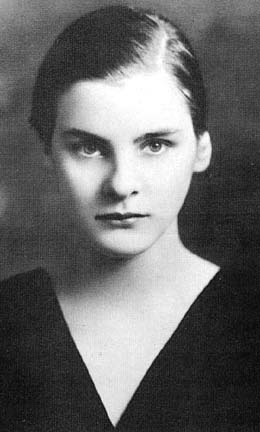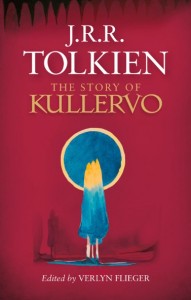
My favourite picture of Rand!
When I recently blogged about the publication of Rand’s draft novel of her later play Ideal, I was completely unaware that another important bit of Rand’s Nachlass – namely The Unconquered, Rand’s adaptation for the stage of her novel We the Living – had been released last year. How on earth did I not hear about this?
Like the novel version of Ideal, it’s not her best work, and Rand was never satisfied with it. It’s certainly not in the same league as the We the Living novel. But it’s much better than the Ideal novel, and contains a number of new scenes, dialogue, and characters not directly derived from the book (indeed it’s a far less faithful adaptation than the excellent movie version), so this really is the closest thing to a new Rand work. (It’s a pity the publisher couldn’t have gotten a better proofreader, though – particularly one who knows the difference between an initial apostrophe and an initial single-quote mark.)

Andrei watches in horror as Kira threatens to brain Leo with her mighty lamppost
Rand rewrote the play several times, often drastically, between 1936 and 1940, so multiple versions exist. The volume contains the first and last versions (almost completely different), plus excerpts from some of the intermediate ones. Andrei’s closing speech in particular went through several versions, one of which references Hitler:
Comrades! Look at the world we’re facing! Do you see the seeds we planted sprouting abroad in new forms? In another country, close to us, there is a man, an obscure man who is rising. He is rising upon a principle he learned from us: Man is nothing, the State is all. What if he proclaims it under another color and another name? We were the first to say it! God forgive us, we were the first to say it! We brought a gift.
Rand also wrote multiple versions of Kira’s death scene before dropping it altogether. These versions generally have Kira captured by border guards rather than simply being shot in the snow. (The idea, presumably, was to enable dialogue to replace the narrative description of Kira’s final thoughts, which works in the book but wouldn’t in a play. When Rand edited the We the Living movie she eliminated the scene also, though it can be viewed as a DVD extra.) In one poignant scene, she asks a guard: “Those lights … over there … it’s the border? … The border of the U.S.S.R.? … The end of it? … And that’s abroad – there – beyond the lights? … So close … I … I could touch it with my hands …” I was reminded of Harry Lime’s tantalising taste of freedom in The Third Man, when he presses his fingers through the grate he cannot open.
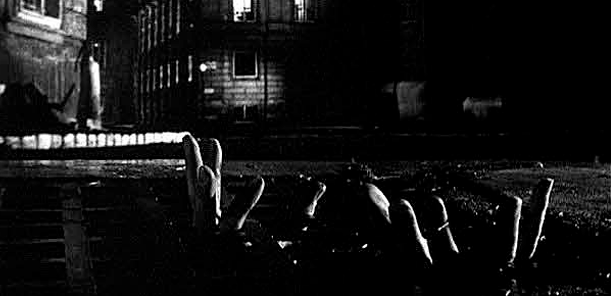
Friends in low places ….
In another version, Kira gives a delirious speech before succumbing to her gunshot wound and falling lifeless to the floor:
Let me go! … I’m still alive … You’ve taken most of it already. Once, when I was very young, I wanted to be an engineer, to work and to build. You’ve taken that. I had a friend and you made me betray him. You’ve taken that. I loved someone, someone who could have lived if he’d been born there, across the border. You’ve taken that. I have nothing left. Nothing but that I know I’m still alive and I can’t give up ….
Do you see what’s around us? Do you see them closing in on us? Do you see them staring, pointing, laughing at me? All the weak, the hopeless, the useless ones of the world! All the blind eyes, the shaking hands, the still-born souls! All the botched, icy-blooded ones who huddle their skins and their sweat together to keep warm enough to stay alive! You think you’ve won? You think you’ve broken me? But I’m laughing at you! I’m alive! Come on! Who’ll fight me first! Why do you shrink? There are so many of you and I’m alone! Or is that what’s frightening you? Alone! The only title, the only crown of glory one can wear today! Stand back, you poor, unborn ghosts! You can’t stop me! …
I can walk. I’ll walk as long as I’m alive. I’ll fight you all as long as I’m alive! … In the name of every living thing of every living world!
The speech doesn’t quite work, and Rand was wise to excise it. But it’s interesting for a couple of reasons. First, the reference to the “botched” and “useless” shows how strong the influence of Nietzsche still was at this point in Rand’s life, before she’d freed herself from Nietzsche’s psychological determinism and his medical model of virtue and vice, and moved fully to the view that virtue and vice are chosen rather than innate.
Second, the speech is clearly modeled rather directly on Cyrano de Bergerac’s death scene in Rostand’s play (not coincidentally, Rand’s favourite play – and the similarity of the names “Cyrano” and “Kira” is probably not a coincidence either):
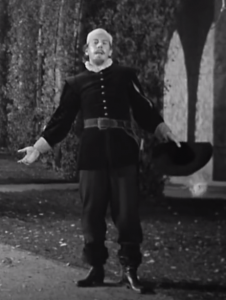
What a lousy audience … I’m dying here!
Already shod with marble … gloved with lead …
Let the old fellow come now! He shall find me
On my feet – sword in hand …
I can see him there – he grins –
He is looking at my nose – that skeleton!
What’s that you say? Hopeless? – Why, very well! –
But a man does not fight merely to win!
No – no – better to know one fights in vain! …
You there – Who are you? A hundred against one –
I know them now, my ancient enemies –
Falsehood! … There! There! Prejudice – Compromise –
Cowardice – What’s that? No! Surrender? No!
Never! – never! … Ah, you too, Vanity!
I knew you would overthrow me in the end –
No! I fight on! I fight on!
Yes, all my laurels you have riven away
And all my roses; yet in spite of you,
There is one crown I bear away with me
And to-night, when I enter before God,
My salute shall sweep all the stars away
From the blue threshold! One thing without stain,
Unspotted from the world, in spite of doom
Mine own! And that is…
That is …
My white plume ….
(from the Brian Hooker translation, basis of the marvelous 1950 José Ferrer movie, which you can watch in HD online)
The fact that Kira’s speech was so closely imitative of Cyrano’s was probably part of the reason Rand dropped it. (Kira’s line “Do you see them staring, pointing, laughing at me?” also fits Cyrano far better than it fits Kira; Kira’s enemies don’t laugh at her especially, and if they did she would mind it less than Cyrano does.)
Now I’d like to read Rand’s screenplay for Red Pawn, but I gather the rights to that are hopelessly tied up between Paramount and Goldwyn.
2017 Addendum:
The complete Cyrano movie is no longer available at the above link, but here at least is the death scene.
